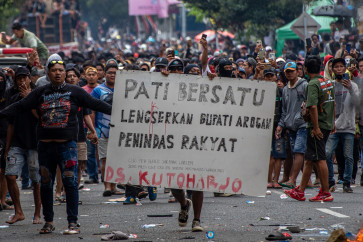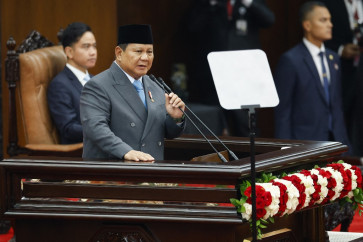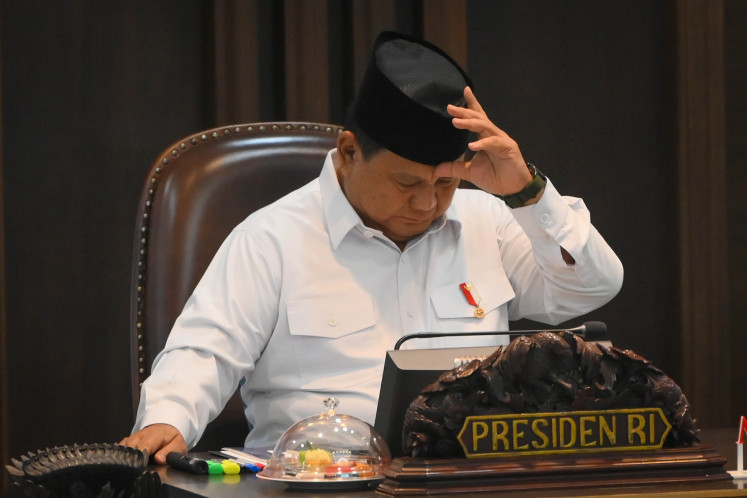Popular Reads
Top Results
Can't find what you're looking for?
View all search resultsPopular Reads
Top Results
Can't find what you're looking for?
View all search resultsBy the way ... Wearing a hat: Is it a smart way to conceal a bald head?
A hat is like a roof for our heads
Change text size
Gift Premium Articles
to Anyone
A
hat is like a roof for our heads. It protects from ultraviolet rays, cold, snow, rain and dust. Some may wear one as a fashion ornament or religious accessory, and others see them as symbols of social status.
We have had plenty of opportunities to wear hats, which come in different types, shapes and colors. A normal hat may cost US$1 but an expensive one, such as a hand-made Montecristi Panama Hat from Ecuador, could cost up to $100,000.
A hat is like a mirror.
“Hats are very self-expressive, very self-revealing and [say] so much about a person’s personality,” Drea Kadilak, a US hat designer, told the Los Angeles Times some time back.
I started wearing a hat a few years ago for none of the aforementioned reasons. One of my friends advised me to wear a hat to conceal my bald head and silver hair. He even convinced me that I might look younger.
It is normal to take off one’s hat to show respect to others. But recently I was forced to take off my hat not in front of a barber or to respect anybody but to avoid a war between two countries. I am not joking. It’s true.
Recently, I was in South Korea and had an opportunity to visit a tiny village called Panmunjom, a Chinese name, but locals call it Neolmun-ri, which means peace.
Along with dozens of tourists from various countries, I visited the Joint Security Area (JSA) in Panmunjom. We were in line to see North Korean border guards.
I was wearing a baseball cap with “Sweden” on it. Corporal Kim, a member of the US-led UN Command, asked me to remove my hat.
“Your Swedish hat may provoke North Korean soldiers. Sweden is a friend of South Korea. You have to take it off immediately,” Kim said.
Helpless, I did as I was told, and everybody in my group was stunned. I wondered how a simple hat belonging to an Indian-born Indonesian citizen could lead to a conflict between Koreans. I asked Kim the same thing.
“Here, nothing is taken for granted. Any small act can be fatal,” Kim said.
The Demilitarized Zone (DMZ) where Panmunjom is located is really a weird place. It was a peace spot in a war zone, where more than a million soldiers with lethal weaponry from both Koreas and the US were always on guard on both sides of the border.
In that area, the main job of soldiers is to just watch the enemy soldiers face to face for 24 hours. They are not allowed to talk or engage in any kind of activity with enemy soldiers. This has been going on for almost six decades.
It was humiliating for me to remove my hat in public. Given the tense situation and stress among the soldiers, I accepted the imposed ban on my poor hat, which I had bought at Drottningholm Palace in Stockholm, the private residence of Swedish King Carl XVI Gustaf, a few years back.
I have traveled to so many countries wearing my Swedish hat without much difficulty. But it has caused problems at places I never imagined it would. After Panmunjom, it happened at a five-star hotel in the Kuningan area of Jakarta.
“You have to take your hat off, sir, while you are on our premises,” the security guard told me politely. This was mainly due to a hat-wearing terrorist who attacked the JW Marriott Hotel in Jakarta in 2009. Since then, some hotels have imposed restrictions on hats.
The immigration officials at Soekarno-Hatta International Airport also asked me to remove my hat while leaving and entering the country. But the security officials at Singapore’s famous Marina Bay Sands just asked me to wear my cap backwards as in the US.
People — both men and women, young and old — have been wearing different types of hats or headdresses for several thousand years without any restrictions. Unfortunately, I have lost my freedom to wear a hat at certain places in the 21st century.
Now I am rethinking my decision to wear a hat, as I didn’t see any benefits from covering my bald head and trying a younger look except for humiliation at certain places.
— Veeramalla Anjaiah










